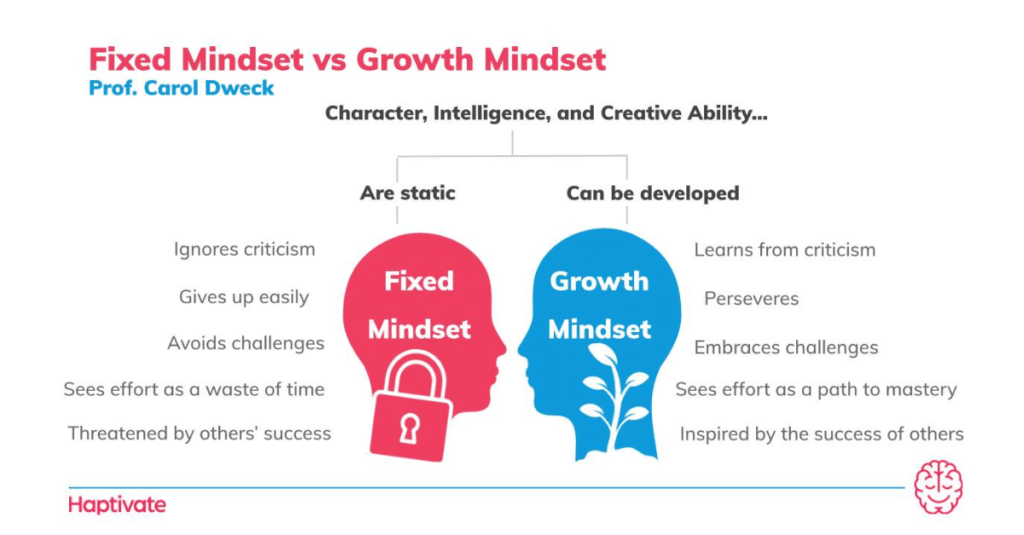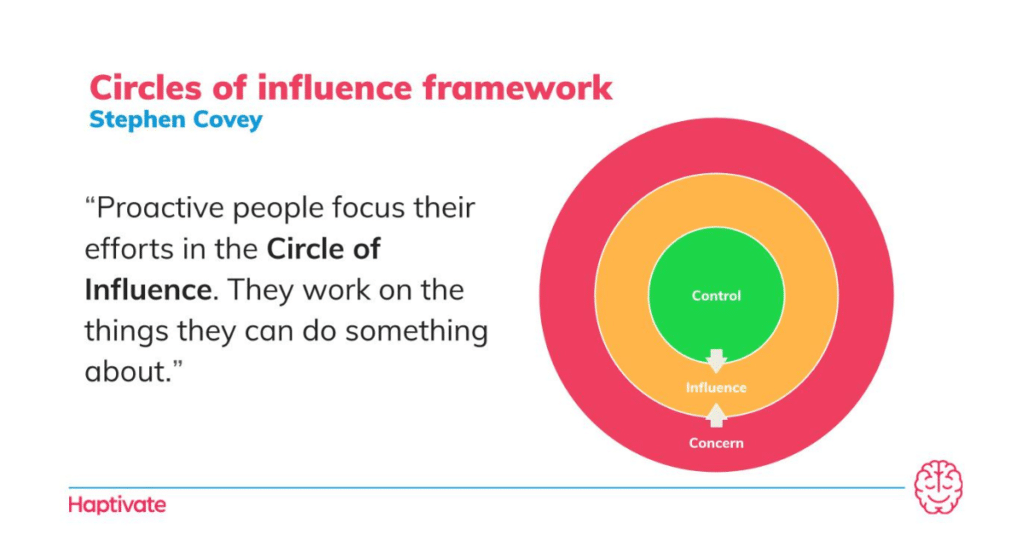Navigating Workplace Transitions: How to Prepare for Change as a Team Leader

Are you a people manager in an organisation going through change?
Navigating change can feel like steering a ship through stormy waters, and it’s natural for both you and your team members to experience stress and anxiety during these times. But fear not, because embracing change doesn’t have to be a daunting experience!
In this article, we’ll dive into the exciting opportunities that change can bring, share practical tips on preparing your team for a smooth transition, and outline what an effective change process looks like.
Our goal is to help you turn change into a positive experience that fosters growth, resilience, and success within your team.
In a hurry? No problem! Download our free Dealing With Change & Uncertainty Planner…
Build your adaptability and feel more in control with this interactive worksheet.
AND get access to all our free wellbeing at work resources!
Table of Contents
Understanding How Change Affects Us: The Research
Change can have a big impact on people, and knowing what’s going on behind the scenes can help employees manage it more effectively. Here’s a closer look at how change affects us.
Our Brain’s Natural Response to Change
Did you know that our brains are wired to perceive change as a threat? This triggers a “fight or flight” response, which can make us feel anxious and resistant to change1.
By being aware of this natural reaction, you can come up with strategies to ease your team’s anxiety and help them embrace change positively.

How Change Can Influence Mental Wellbeing
Change can bring feelings of uncertainty and insecurity, which can take a toll on our mental wellbeing.
A study by the National Institute for Occupational Safety and Health (NIOSH) found that employees experiencing work-related changes, such as job insecurity and organisational restructuring, are at an increased risk of stress and mental health issues2.
As a team leader, it’s important to recognise the potential impact of change on your team’s mental wellbeing and support them through the transition.
Bouncing Back: The Power of Resilience
Resilience, or the ability to adapt to change and recover from challenges, plays a key role in how we handle change.
A study in the Journal of Occupational and Organisational Psychology found that employees with higher resilience levels were more likely to adapt positively to organisational change3.
By helping your team build resilience, you can create a more adaptable and successful workforce during times of change.
The Rewards of Successful Change
A stronger business
When change is managed successfully, it can lead to a significant boost in your organisation’s financial performance. Research by McKinsey has shown that companies adept at handling change outperform their peers by a whopping 70% in terms of financial returns4. By embracing change, you’re setting your organisation up for long-term success and stability.
Stronger teams
Change can also have a positive impact on your team dynamics. A study by the Institute for Employment Studies (IES) discovered that actively involving employees in change processes can lead to increased commitment and engagement5.
This enhanced involvement translates into improved performance and outcomes, creating a more resilient and high-performing team that’s ready to tackle challenges head-on.
Greater innovation
Change is often synonymous with innovation, as it frequently introduces new technology, systems, or products. Embracing these developments not only helps your company grow but also ensures it remains competitive within its industry.
By staying ahead of the curve and fostering a culture of innovation, you’ll be able to tap into your team’s creative potential and drive your organisation towards a brighter future.
Fixed Mindset vs Growth Mindset: Embracing Change with the Right Attitude
Change can be tough, but what if the key to thriving during change lies in our mindset? Let’s explore the difference between a fixed mindset and a growth mindset, and how it impacts our ability to adapt.
According to psychologist Carol Dweck, our mindset plays a critical role in how we approach challenges and cope with change (Dweck, 2006)6. Dweck identified two types of mindsets: fixed mindset and growth mindset.

Fixed Mindset:
People with a fixed mindset think their abilities, intelligence, and talents are set in stone. They avoid challenges, throw in the towel when things get tough, and see failure as a sign they’re not good enough. When it comes to change, a fixed mindset can hold them back and stop them from growing.
Growth Mindset:
On the flip side, those with a growth mindset believe their skills and intelligence can be improved with effort, learning, and persistence. They dive into challenges, keep going even when things are rough, and see failure as a chance to learn and get better. A growth mindset helps them bounce back, adapt, and keep getting better during times of change.
So, how do you cultivate a growth mindset within your team and use it to prepare for change? Well, it all starts with you, the people manager.
Lead the Way: How to Prepare for Change as an Effective Leader
Before leading your team through change, it’s essential to prepare yourself first. After all, you can’t pour from an empty cup! Minimising risk starts with you.
As a leader, it’s crucial to manage your emotions, thoughts, and actions during times of change. The Circles of Influence framework by Stephen Covey is a great tool for self-reflection and growth.7

Here’s an example of how you can apply this method to prepare yourself for change:
1. Focus on your Circle of Influence: Identify the aspects of change that you can control, such as your attitude, communication, and decision-making. Concentrate your efforts on these areas to make a positive impact.
2. Expand your Circle of Influence: As you proactively address the elements within your control, you’ll build credibility and trust with your team. This can lead to increased influence and the ability to drive change more effectively.
3. Acknowledge your Circle of Concern: Recognise the factors outside of your control, such as external forces or organisational decisions. Accept that you may not be able to change these factors directly, but you can still influence how you and your team respond to them by leveraging your skills and expertise.
To give you and your team an extra boost while navigating change, we’ve whipped up a FREE resource…
Dealing With Change & Uncertainty Planner
Build your adaptability and feel more in control with this interactive worksheet.
AND get access to all our free wellbeing at work resources!
This planner is packed with handy tools and exercises to guide you through the change process, tackle uncertainty, and keep everyone’s spirits high.
Preparing for Change: How to Support Your Team Through Transition
As a manager, preparation is key before implementing any change project. It helps to ensure a smooth transition, reduce risk and increase the chances of success. The following areas should all be considered when preparing for change:
Assessing the need for change
When you start preparing for change, you should first assess the need for it by identifying the key factors driving the change. This will help you to develop your vision and goals.
Research by McKinsey found that it’s good practice to begin a change project with a rigorous analysis of the current situation so search for any and all data that could be useful8. By developing your understanding of the need for change, you can clarify your vision and set achievable goals to get there.
Developing your plan
After you assess the need for change and your goals are decided, create a plan and outline the key steps that will get you to the desired outcome. The plan should include timelines, resources needed, and any potential obstacle or threat that may arise.
A study by Prosci found that effective planning is the most critical factor in successful change management initiatives9. Having a clear plan in place reduces risk and helps ensure that everyone is working at full capacity towards the same goal.
Creating a Coalition of Support
Ensure all relevant stakeholders and groups are included in planning change. When you talk to people, it helps to make sure that everyone’s needs, ideas and concerns are factored in.
An HBR study found that building a coalition of support is one of the best ways to overcome resistance to change. So be sure to have a good search through your employee directory.
Providing Training
Training and development of your colleagues is an important part of preparing for change, helping them to develop the skills they need before taking on any new responsibilities. Equipping people with the right knowledge and expertise will make adapting to change a lot easier. You should also consider how you can equip them to manage the stress and anxiety that accompanies periods of change and uncertainty.
Related Workshop: Navigating Workplace Change
When we feel a lack of control, the brain’s threat system can be overactive, draining confidence and paralysing decision-making. However, there are a number of practical techniques we can use to manage our anxieties and feel more empowered. This workshop will show you tools you can implement immediately.

What Does an Effective Change Process Look Like?
Leading organisational change can be a challenging task. However, by following a logical sequence, you can ensure that the change project is effectively implemented while also reducing stress and anxiety for everyone.
Communicate
Clear and consistent communication is key. When leaders explain the reasons behind the change project, the benefits, and the steps taken to implement the change, many concerns can be addressed proactively. It can also quickly surface any issues that weren’t expected, letting you respond and determine whether a course correction is needed.
Consider using various communication channels to maximise interest and participation. For example, group meetings, one-on-ones, email updates, and chat announcements.
Plan
Involving your employees is one of the critical factors managing change properly. This can be achieved through involving colleagues in planning, providing training and development opportunities, and soliciting feedback continuously.
A study by Prosci found that an organisation that involves employees in planning change is six times more likely to meet or exceed their objectives.
Support
Leaders must ensure their people have the help they need during periods of change. This includes providing resources, knowledge, training, and coaching to help employees adapt to the change.
Research by McKinsey found that companies that properly support employees during change have a 3.5 times higher success rate compared to those that don’t. It also helps to reduce employee stress and anxiety associated with change.
Celebrate
Celebrating successes along the way can help to create momentum and maintain positive team dynamics. So remember to acknowledge and reward people for their efforts and achievements. This can be achieved through various means, for example, thank you notes, social outings, and shout-outs in meetings.
Get free access to wellbeing resources, news and research Get access to the exclusive Haptivate Wellbeing Resource Hub and stay up to date with all the latest wellbeing at work research, tools and tips by joining our monthly newsletter. We promise not to share your data or spam you with irrelevant information 🙂
Wrapping up
Change can be really daunting. But with good preparation will minimise risk and help you to create positive outcomes that benefit everyone.
Actively managing change can also ensure a smoother transition for everyone which can benefit wellbeing.
Remember, the search for success in times of change begins with your approach and attitude. Equip yourself with the tools and strategies discussed in this article, and you’ll be well on your way to mastering the art of change management.
Looking for more support in managing change within your organisation? We offer interactive employee wellbeing workshops that provide practical guidance and insights to help you and your team navigate change effectively.
Our hands-on sessions foster collaboration and learning, empowering your team to embrace change with confidence.

Aysha Frost
Digital Marketing
Get in touch
Other articles that may interest you…
Important Dates For Your 2025 Wellbeing Calendar (+ FREE Download)
Important Dates For Your 2024 Wellbeing Calendar
Work from Home Wellbeing Ideas: Nurturing Balance and Wellness in a Remote Environment
Navigating Workplace Transitions: How to Prepare for Change as a Team Leader
- (Rock, 2008) https://neuroleadership.com/your-brain-at-work/
- (Sauter, et al., 1999) https://www.cdc.gov/niosh/docs/99-101/pdfs/99-101.pdf?id=10.26616/NIOSHPUB99101
- (Shin, Taylor, & Seo, 2012) https://bpspsychub.onlinelibrary.wiley.com/doi/10.1111/j.2044-8325.2011.02039.x
- (McKinsey & Company. (2015). The inconvenient truth about change management: Why it isn't working and what to do about it
- Institute for Employment Studies. (2012). Engaging Employees in Times of Change: A study of the effectiveness of different employee engagement strategies during organisational change
- Dweck 2006
- Covey, S. R. (1989). The 7 Habits of Highly Effective People. Simon and Schuster
- (McKinsey & Company. (2015). The inconvenient truth about change management: Why it isn't working and what to do about it
- Prosci. (2018). Best Practices in Change Management





